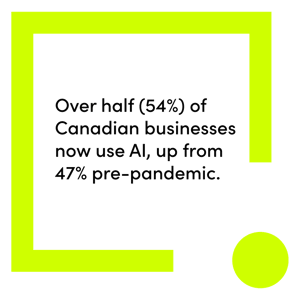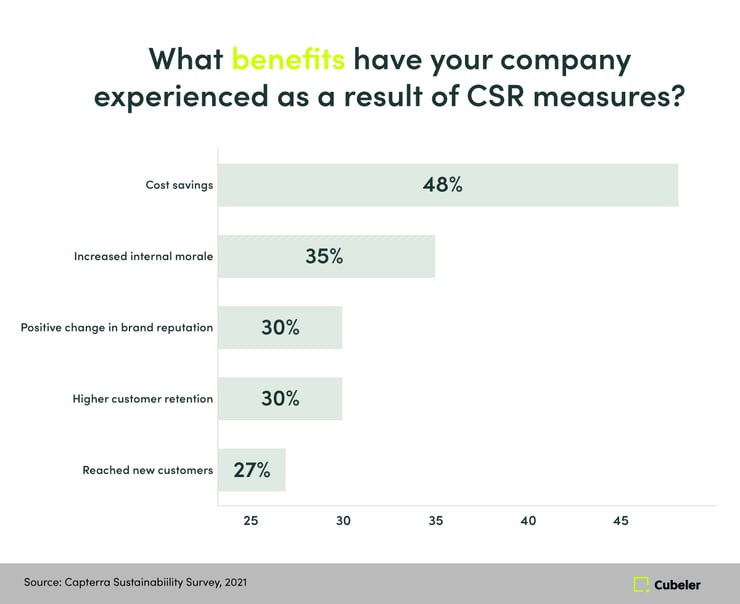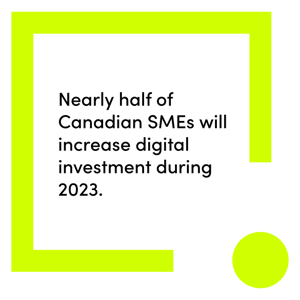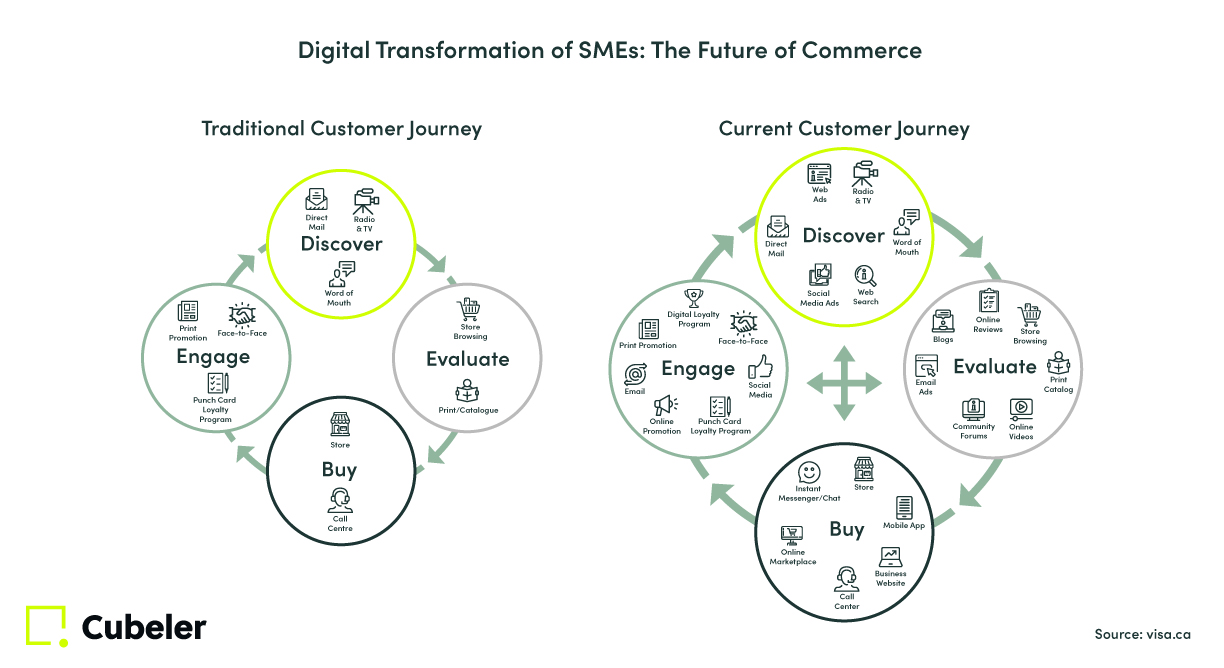Unlock the Power of Marketing: Get Your Free Marketing Plan Workbook
Enhance your marketing expertise with our free Marketing Plan Workbook, tailored specifically for small business owners...
7 min read
By:
Cubeler en-ca
26-Apr-2023 2:00:00 PM

With digital marketing firmly in the spotlight, here are five key current and upcoming trends every SME marketer needs to know and apply in 2023, along with actionable advice you should follow to the letter now and down the road.
Every year, we’re seemingly inundated with the next big digital marketing trends to watch. This year is no different—but with a twist.
While often a pithy and diverting read for many marketers, the marketing tricks and tips expounded by the “Forbes” and “Business Weeks” of the world all too often cater to big corporates and titan tech brands.
Left out of the “digital marketing trend report” equation are the small and medium-sized enterprises (SMEs) that form the backbone of Canada’s economy.
Even with the best advice from these lofty business publications, advice for the typical SME will always need to be different. Smaller teams and tighter budgets mean the challenges SMEs face are different and, often, more numerous than their bigger competitors.
Not anymore. We’ve got you covered.
With digital marketing firmly in the spotlight, here are five key current and upcoming trends every SME marketer needs to know and apply in 2023, along with actionable advice you should follow to the letter now and every mile down the road.
Artificial intelligence (AI) has long been the plaything of big enterprises and tech giants. As with many emerging technologies, small business owners and their marketing executives can only really consider serious AI investments when accessibility and affordability warrant it.
Fortunately, we’ve reached a tipping point with AI. Technology has reached a stage where investment won’t break the bank, and solutions provide probable and tangible returns.
If SME owners invest wisely by choosing the right AI solutions and ensure each piece of tech is addressing a specific business challenge, then it could play a transformative role in their marketing operations.
 For marketers, one of the biggest draws of AI is its ability to transform data into actionable marketing insight. SMEs still possess vast amounts of data, often sitting around unused. It’s not through lack of commitment, but shortage of resource, time and budget that makes it so tricky to leverage.
For marketers, one of the biggest draws of AI is its ability to transform data into actionable marketing insight. SMEs still possess vast amounts of data, often sitting around unused. It’s not through lack of commitment, but shortage of resource, time and budget that makes it so tricky to leverage.
That’s where AI steps in. Its ability to create sophisticated algorithms, detect patterns and segment consumers into accurate target audiences proves AI is capable of the levels of data analysis humans could only dream. And all of it can often be achieved in a matter of seconds.
Of course, there are important considerations for SME marketers around ethical use of AI, such as privacy, cybersecurity and regulation. Indeed, research shows 95% of Canadian business owners find ethical use of AI a big barrier.
Nascent AI technologies such as ChatGPT (copywriting) and text-to-image tools are adding more fuel to the ethical fire, so it’s important SME marketers keep a respectable distance before jumping on any potential AI-enabled ‘silver bullet’ bandwagon.
And although Google has recently backtracked on its stance of punishing websites that use AI-generated content, it will always reward original, relevant above all others.
The best place to start is with proven, affordable AI technologies and scale accordingly from there. Here are some examples you can explore:
Branding: AI is increasingly being used across the branding world. Using algorithms, AI conducts a sweeping analysis of your website and then makes intelligent, automated suggestions to improve your branding. This can vary from new content templates to syncing existing content libraries, or even creating new branding strategies from scratch.
Audience segmentation: Using AI, SME marketers can create more sophisticated and in-depth audience segments, based on a consumer’s historical behavior—such as past purchases and browsing history. What’s more, AI can dynamically shift consumers to different segments. Consumer interests and behaviors evolve time, after all, and AI can automatically transition people between segments, based on what’s relevant to them in the moment.
The cookieless future has been looming over the marketing world for a few years now. First announced at the beginning of 2020, Google’s planned deprecation of third-party cookies has now been pushed back to 2023.
When the news initially dropped, it spun the marketing world into a panicked frenzy. That’s because, over the past few decades, most marketing campaigns have been built on third-party data. But it’s come at a price. Consumer sentiment around the data that brands collect (and how they use it) has plummeted to an all-time low.
 Indeed, research reveals seven in 10 (69%) of Canadians worry about personal data that’s sold or shared without their consent, with only 6% believing their information is used for its intended purpose.
Indeed, research reveals seven in 10 (69%) of Canadians worry about personal data that’s sold or shared without their consent, with only 6% believing their information is used for its intended purpose.
Despite the pending cookieless future, research shows that, globally, 75% of marketing executives still rely heavily on third-party cookies—even though over three-quarters of them, according to recent Adobe study, recognize the demise of the cookie will damage their business. In others words, SMEs need to stop the cookie crumbling and invest in first-party data to succeed.
Many businesses are already investing in alternative methods, namely first-party data strategies. First-party cookies consist of consented data—typically gathered from your website or other owned channels—giving SME marketers more accurate and trusted pictures of their customers.
After all, what better way to engage with customers than with information they’ve willingly shared? That’s the essence of an authentic, relevant customer experience.
This isn’t something to sit on. Transitioning away from third-party data strategies isn’t an overnight affair. It takes months of considered preparation and planning. The wait-and-see approach simply is not an option.
SME marketers must act now if they’re to remain competitive in a cookie-free world.
Across the business world, we’re undoubtedly held to a much higher set of standards than ever. And while SMEs don’t possess the same pressure as big enterprises regarding their carbon footprint or other social and environmental demands, the responsibility is still there.
In fact, as the backbone of many local communities, you could argue the responsibility is even greater. When it comes to CSR (corporate social responsibility), there are a number of considerations for SMEs:
Workplace equality: From gender to race to age, do your employees accurately reflect a modern, diverse and inclusive society?
Ethical investment: Outside of your main business interests, how does your company contribute towards a more ethical society?
Sustainability: What is the environmental impact of your business operations, and are you contributing towards achieving a net-zero future?
While it’s important to hold your own company actions accountable to the above criteria, it’s also critical to extend CSR considerations across your entire product or service lifecycle.
This means interrogating the ethics of everyone involved in your supply chain, from manufacturers to partners, and even your own customers.
CSR initiatives don’t just make our world a better place—they also yield a few considerable business benefits:
Cost savings: Small changes go a long way. And while many SMEs may be wary of the initial short-term costs of introducing new CSR initiatives, the long-term results can save you some serious cash.
Employee engagement: Top talent is much more likely to seek you out, and existing employees remain more engaged and productive, if they work for a company that champions values close to their heart.
Customer engagement: Likewise for customers, people are more likely to go out of their way, or even part with extra cash, to purchase from brands who align with their own values and causes.
Brand reputation and differentiation: Possessing strong CSR initiatives and sustainability practices help elevate your offering over your competitors.

But what is marketing’s role in the CSR conversation? Well, as the master of communications, marketers will naturally assume the position of torchbearer for most things CSR.
That’s not to say marketers must shoulder all the responsibility. Increasingly, we’re seeing new roles emerge like chief climate officers and heads of sustainability.
And while these roles may not translate well to a small business setting, it’s certainly worth creating separate strategies and responsibilities specifically assigned to corporate responsibility, which can be shared with your team.
The digital marketing world is constantly changing. Staying on top of the latest trends is difficult for even the biggest marketing teams, never mind smaller (often one-person-band) outfits. With tighter margins and smaller budgets, every decision and investment made by SME marketers must be taken with painstaking care and precision.
That’s because change can happen at a moment’s notice. The market can change overnight, prompting unpredictable and unusual consumer behaviors and attitudes. Those who react and adapt the quickest will rule the roost.
Understanding consumer behavior, and how this can flex and evolve over time, is critical for SME marketers. Among the biggest changes in recent years is that the average customer journey is now almost exclusively self-serve, and in many cases, 100% digital.
 SME marketers must now understand the customer journey is no longer a linear affair. Gone are the days of Discover > Evaluate > Engage > Buy. There are now dozens of touchpoints, platforms and channels—both online and offline—for brands to consider.
SME marketers must now understand the customer journey is no longer a linear affair. Gone are the days of Discover > Evaluate > Engage > Buy. There are now dozens of touchpoints, platforms and channels—both online and offline—for brands to consider.
Also gone are the days where having a website was enough for an SME. It’s no longer even enough to just have an ecommerce site.
To truly thrive, SME marketers must create seamless customer journeys: omnichannel, ease of information, transparency, customer reviews, high-quality product assets—all must click and connect to create a frictionless digital experience that, at least from the customer side, is effortless.
Consumers are also more empowered than ever before. In a subscription-based world, they can switch products and services with a swipe or click of a button, making trust the new premium currency in the digital-first world.

The lesson here? It’s time to start small, think big and scale quickly.
As much as we’d like it, SME marketers just aren’t afforded the same “don’t be afraid to fail” mindset as their bigger competitors when it comes to digital marketing investments.
That doesn’t mean you can’t dream big. It just means investment must start small and grow from there. Before investing in new technology, ask these questions: what’s the biggest marketing problem my business is facing right now, and how can that be solved with technology?
Once you’ve identified these gaps, invest in the requisite technology and apply it across one or two areas. If it’s successful, scale it further up the business. If it doesn’t achieve the results you want, then you can cut and run with minimal negative impact.
With a potential global recession on the horizon, many small businesses are likely to further tighten their purse strings, and marketing is often the first to feel the pinch.
With budgets shrinking, yet increased pressure to deliver the same (if not higher) results—what small changes and shrewd investments can SME marketers make to yield big rewards?
Although it may seem counterintuitive, the worst thing a small business can do during a recession is slash their marketing budgets. In fact, research shows those who invest in marketing growth, especially around paid advertising, often enjoy some pretty impressive increases in sales.
Over the next year or so, many brands will halt some, if not all, paid advertising—the companies that stick it out will likely get a much bigger bang for their buck.
 If budgets are drastically cut, then organic marketing represents an alternative to keep things ticking over until the economy starts to recover.
If budgets are drastically cut, then organic marketing represents an alternative to keep things ticking over until the economy starts to recover.
And when it comes to messaging and tone of voice, remain aware that people are facing tough challenges of their own. Craft content and engage customers with this in mind, focusing on empathy and sensitivity. Nothing irks a consumer more than tone deaf marketing communications, especially during difficult times.
Although the global recession may not be the right time to invest in a risky piece of new marketing technology, it certainly doesn’t mean all investment must stop. Those who make efficient and considered investments during the recession will undoubtedly emerge from the other end in a better position than those who don’t.
With digital marketing firmly in the spotlight, here are five key current and upcoming trends every SME marketer needs to know and apply in 2023:
Trend #1: Embracing AI (finally a viable option for SMEs)
Trend #2: Growing urgency to prep for a cookieless future
Trend #3: Increasing consumer demand for greater corporate responsibility
Trend #4: Keeping pace with shifting consumer behaviour
Trend #5: Meeting the global recession head-on

Enhance your marketing expertise with our free Marketing Plan Workbook, tailored specifically for small business owners...

Find out what you need to know to bypass the most common marketing pitfalls.

Expand your SME business network the right way. Learn how to connect with like-minded SME owners and decision-makers to...